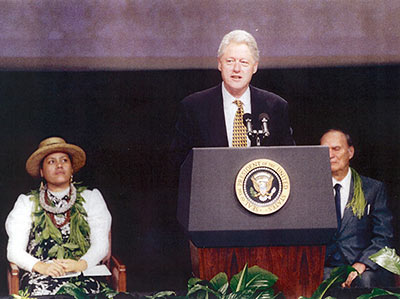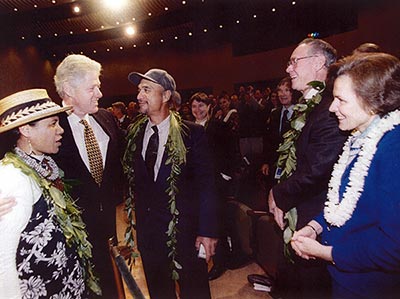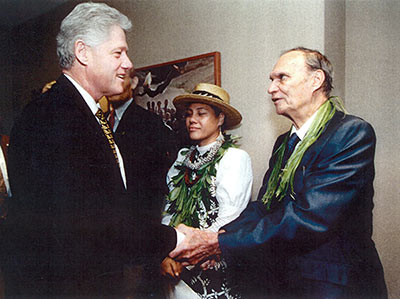Celebrating 15 Years of a Major Marine Conservation Milestone
On January 18, 2001, then President Bill Clinton issued a second Executive Order (EO 13196) ensuring the permanent protection of the preservation areas and conservation measures for the Northwestern Hawaiian Islands Coral Reef Ecosystem Reserve (NWHICRER) set forth in EO 13178 in December 2000. The creation of the Reserve, managed by NOAA’s Office of National Marine Sanctuaries, was the first large-scale marine conservation measure put forth by the United States, a historic act of protection for the coral reefs in three-quarters of the Hawaiian archipelago, and the largest in the world at nearly 140,000 square miles. It was also the second ever created since the establishment of the Great Barrier Reef Marine Park in 1975. It paved the way for the later designation of what is now Papahānaumokuākea Marine National Monument in 2006 and its inscription as the nation’s only mixed natural and cultural UNESCO World Heritage site in 2010.
At the end of the millennium, coral reefs around the world were in crisis and many governments were struggling to understand and protect these crucial marine resources. Large-scale marine protected areas that encompass entire geographies and multiple habitats were seen as one tool to address various threats.
Many conservation and cultural leaders in Hawaiʻi had long recognized the Northwestern Hawaiian Islands as a unique - and nearly pristine - place worthy of the highest protections and helped pave the way for President Clinton’s act. Among them were the late Buzzy Agard and Dr. Isabella Aiona Abbott, along with Isaac and Tammy Harp, ʻAulani Wilhelm, Robert P. Smith, Tim Johns, Athline Clark, Linda Paul, William ʻAilā Jr., Vicky Holt Takamine, Bill Gilmartin, Dave Raney and many others that sought protection for the area and helped facilitate the dialog that led to the creation of the Reserve.
Fifteen years after that historic moment, the Northwestern Hawaiian Islands has earned increased protections, gained Hawaiʻi its second World Heritage site, and brought together state and federal agencies to protect the nature and culture of the area under a shared vision and unified management. The creation of the NWHICRER spurred a movement, resulting in more than a dozen large-scale marine protected area designations around the globe, and managers working together to improve efforts and share these wonders – and their significance – with the world.
While coral ecosystems around the planet still face global threats - rising sea temperatures, marine pollution and alien invasive species - protection of entire marine areas is one step to preserving these resources for future generations.
This day is the beginning of a year of anniversaries for protections of the Northwestern Hawaiian Islands, to be celebrated not only by resource managers but also the people of Hawaiʻi and the world.



